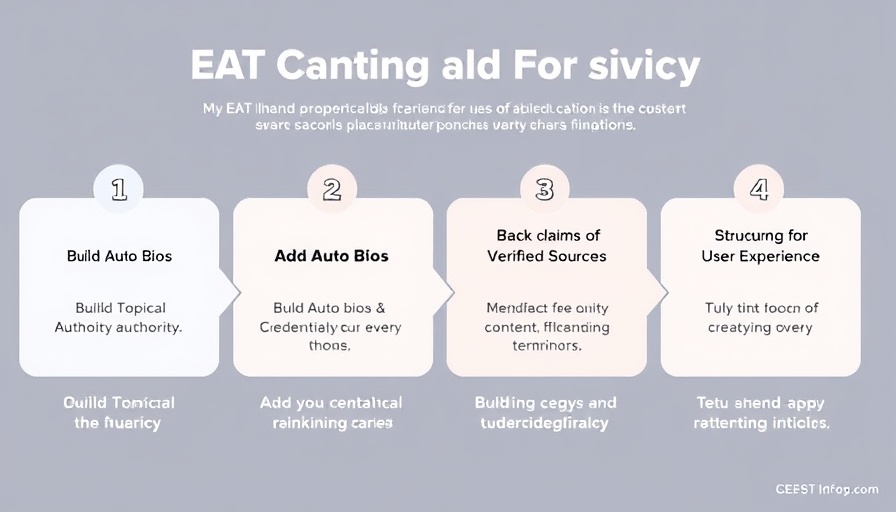
Understanding EEAT: The New SEO Frontier
In the rapidly evolving digital landscape of 2025, mastering the intricacies of Google’s EEAT framework (Experience, Expertise, Authoritativeness, and Trustworthiness) is essential for anyone looking to enhance their online presence. Traditional SEO strategies that focused merely on keywords and backlinks are no longer sufficient. Modern content must resonate with both search engines and human readers, and understanding user intent is the first step in that process.
Decoding Search Intent for Better Engagement
Search intent is the foundation of creating content that not only ranks well but also engages readers. Conducting thorough SERP research is invaluable. By identifying the type of content that performs best for your target keywords, you can tailor your articles to fill gaps in information and offer more comprehensive solutions. Are audiences craving detailed guides, quick how-tos, or interactive content? Understanding these nuances allows you to customize your approach for better engagement.
Creating Click-Worthy Titles
Your title is your first shot at grabbing attention, occupying a critical role in both SEO and user engagement. To craft a title that not only describes your article but also compels readers to click, keep these tips in mind:
- Ensure it’s under 60 characters to avoid being cut off in search results.
- Place primary keywords at the beginning.
- Incorporate benefits, numbers, or action words to increase click-through rates.
Enhancing Readability: The Key to User Retention
Ensuring your content is easily digestible is paramount. Structure your articles with short paragraphs, strategic headings, and engaging visuals to facilitate scanning. Use bullet points or numbered lists to clarify key messages. In addition, maintain a conversational tone that makes your audience feel welcomed and encourages them to stay on your page longer. The more accessible your content, the more likely it is to resonate with readers, signaling its value to Google.
Demonstrating Authentic Experience
Experience is becoming more important within the EEAT framework. Sharing your journey provides a unique insight that can’t be duplicated. Utilize personal anecdotes, and case studies, or illustrate your point with specific lessons learned to develop trust with your audience. When discussing a project—be it kitchen design or landscaping—show your real-life involvement and expertise. How did you address challenges? What tools or techniques did you use? These elements not only convey experience but also bolster your authoritativeness.
Why Expertise Builds Your Authority
Providing insights into roofing services, kitchen remodeling or landscaping trends is incomplete without leveraging your expertise as a foundation. Sharing your specific skills and knowledge will solidify your position as an authority in your field. Take time to add credentials, certifications, or noteworthy projects to your byline. This transparency not only builds trust but also enhances the perceived value of your content.
Utilizing Visuals for Engagement
Integrating visuals such as infographics, images, or videos can elevate your content immensely. They serve not only to break up text but also to provide essential context that enhances understanding. For example, effective before-and-after images in a remodeling piece can effectively convey progress, making your written content resonate more deeply.
Conclusion: Take Your Content Strategy Up a Notch
As you plan your content strategy moving forward, remember that understanding and implementing Google's EEAT factors will greatly shape the quality and relevance of your online contributions. By marrying engaging writing with expert knowledge and the effective use of visuals, you position yourself as a credible source in your field. Start by implementing the strategies outlined above and watch your content's performance flourish.
 Add Row
Add Row  Add
Add 




Write A Comment